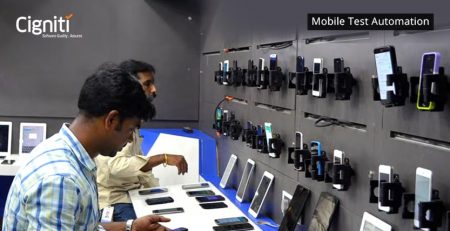Top 5 Mobile Testing Issues to Avoid and How to Resolve Them
The proliferation of mobile devices and mobile apps around the world has exponentially increased their usage in every domain. As their usage amplifies the business and leisure for employees and customers, organizations are investing heavily in the transformation of their corporate strategies through enterprise mobility, thereby making mobile app testing crucial for developers. Putting out a polished, bug-free product is obviously the chief objective of any business, but unfortunately 50% of bugs and defects are discovered by disappointed users who had implicit faith in the quality of their purchase or download.
Common testing issues can seriously harm the apps you create.
Here are 5 Mobile testing issues and a brief description of how to resolve them.
- MobileTesting without a concerted strategy: This happens when developers decide to conduct only cursory testing, and expect bug reports after launch giving no scope for beta testing. Obviously your brand reputation suffers as consumers are very discerning and demanding, and they don’t appreciate being treated as beta testers when they’re expecting a finished product on their devices. Furthermore, this method does not have a complaint recording system. Developers, while using this strategy, need to consider factors such as the market, region, user experience, and network coverage, as it showcases company’s professional integrity and commitment to its customers.
- Lack of regionally controlled testing: Testers in this scenario are instructed to venture into certain specified locales and carry out testing in specific network regio Where this type of testing does not account for conditions that apply to a wide range of users in different locations. The lack of test universality prevents the app from functioning consistently. As Region, operating system / device, and network bandwidth all contribute to the individualized experience of any given user at any given day and time this method works only to the extent that it confirms app robustness in a limited set of situations and locales.
- Partial emulation: Testers sometimes emulate the conditions of potential real-world use in customized, closely inspected environments. The main issue here is the dependence on static bandwidth, which is not reflective of the real world, where network strengths are in a state of constant flux. As latency is dependent on coding methods and network protocols, in addition to the interactions in the equipment of the network infrastructure, it’s important that while using an emulator, one should also take into the account the factor of latency, which is highly dynamic rather than fixed.
- Networking issues: If an app is tested without taking into account the need for streaming, the end-user experience is likely to be quite underwhelming, which will naturally affect your company’s image. App needs to be tested in two areas: the way the app is operating on its own, and its behavior on a certain network. It avoids jittery video performances because of their bandwidth requirements, with varying degrees of smoothness depending on the type of network, service provider, region, etc.
- Improper sterile functional testing: This takes place when testers examine only functional components of an app, and do not assess performance of an app. But functionality is not the sole factor in the success of any mobile app. Functioning relates to the role of certain actions and responses in an app (such as the response when a particular button is pressed or a menu is opened). App performance, on the other hand, is related to measuring such responses in terms of quickness and smoothness, in the context of factors such as network, operating system, device, etc). So, essentially, along with assessing what reactions take place when a user executes a certain action is the domain of what we call functional testing, its equally important to measure the speed of a response to any given command is the domain of performance testing.
Therefore when testers combine functional and performance testing, they should also account for external influences while writing tests for mobile apps. Consumers and enterprises expect not to spend much time on reporting errors or rework. Furthermore, organizations want to have a reputed testing with quality assured practices. Cigniti with strong methodologies and proven practices is trusted in providing quality assured practices. Visit cigniti.com to get in touch with us and see how we can help your QA teams while handling these Mobile Testing issues.





Leave a Reply